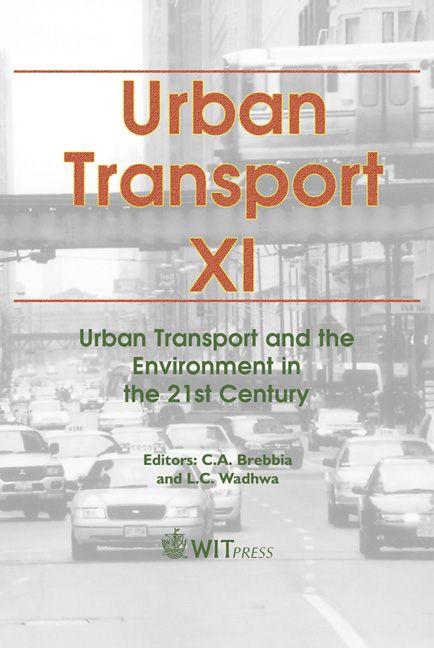Incompleteness Of The Urban Traffic Plan In Preliminary Studies Of Environmental Impact: The Real Case Of \“urban Canyons”
Price
Free (open access)
Transaction
Volume
77
Pages
12
Published
2005
Size
977 kb
Paper DOI
10.2495/UT050411
Copyright
WIT Press
Author(s)
F. Patania, A. Gagliano & F. Nocera
Abstract
The General Urban Plan (PRG) and the correlated Urban Traffic Plan (PUT) which have dictated the guidelines both of building and social-economic development of the city for at least twenty years, must hold in esteem the environmental effects coming from the choices of planning, such as the detrimental consequences that could be correlated with air pollution coming from urban traffic. In fact, the gaseous polluting concentrations in the roads of the city are closely connected to three main key-factors: volume and typology of car traffic, the shape ratio W/H between the height of buildings and width of roads and, at least, the meteoclimatic conditions of the area. In particular, the W/H ratio has a predominant influence on the dispersion of air pollution since it can cause a so-called \“canyon effect”, a factor which has an extremely negative effect on the dispersion of gaseous pollution. Owing to previous reasons the PRG and PUT must be closely supported by a preliminary Study of Environmental Impact (SIA) which is able to determine the limits of the volume of car traffic in the zones of the city where there are many urban canyons or other sensible structures to avoid stagnation of gaseous concentrations. This paper wants to demonstrate the need to have the SIA as a support for the PUT, pointing out, by ADREA-HF 3D fluid dynamic environmental code and by experimental measurements in situ, the real possibility of having, under specific generic features of the boundary roads, concentrations of polluting gases higher than those fixed by Italian Environmental Law. Keywords: carbon monoxide, urban canyon, air pollution control.
Keywords
carbon monoxide, urban canyon, air pollution control.





